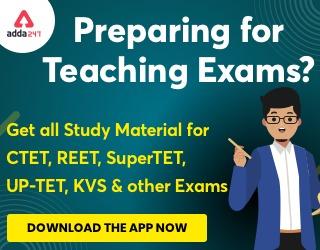Table of Contents
Project method involves investigation, discovery and finding out something which was not known to the student before. Project Method was invented by W.H. Kilpatrick for teaching. Here we are going to learn Project Method , definitions, Types, Merits and Demerits in details.
Project Method योजना विधि
Project is the modern method in which the student’s creativity in designing the content of studies. According to W.H. Kilpatrick, “A project is a wholehearted purposeful activity proceeding in a social environment.”
योजना आधुनिक पद्धति है जिसमें छात्र अध्ययन की सामग्री को डिजाइन करने में रचनात्मकता करते हैं। डब्ल्यू एच किलपैट्रिक के अनुसार, “एक परियोजना एक सामाजिक वातावरण में आगे बढ़ने वाली एक संपूर्ण उद्देश्यपूर्ण गतिविधि है।”
Types of Project: –
- Individual and Social Projects: In an individual project, every student’s problem is solved in their own according to interest, capacity and attitude.
- Group Projects: The problem is solved by the group of pupil in the class. Here the social, citizenship qualities developed.
- Simple and Complex Projects: In the simple projects the students are completing only one work at a time. It gives deep information of the project, thus the students get deeper and broader knowledge about the problem. In the complex project, the students are carried out more than one work at a time. They are focused on the work in various activities and dimensions.
योजना के प्रकार: –
- व्यक्तिगत और सामाजिक योजनाएँ: व्यक्तिगत परियोजना में प्रत्येक छात्र की समस्या का समाधान रुचि, क्षमता और दृष्टिकोण के अनुसार अपने आप में किया जाता है।
- समूह योजनाएँ : समस्या का समाधान कक्षा में विद्यार्थियों के समूह द्वारा किया जाता है। यहां सामाजिक, नागरिकता गुणों का विकास हुआ।
- सरल और जटिल योजनाएँ : सरल परियोजनाओं में विद्यार्थी एक समय में केवल एक ही कार्य पूरा कर रहे होते हैं। यह परियोजना की गहरी जानकारी देता है, इस प्रकार छात्रों को समस्या के बारे में गहरा और व्यापक ज्ञान मिलता है। जटिल परियोजना में छात्रों को एक समय में एक से अधिक कार्य किए जाते हैं। वे विभिन्न गतिविधियों और आयामों में काम पर केंद्रित हैं।
According to Kilpatrick there are four types of projects. They are
- Constructive Project : Practical or physical tasks such as construction of articles, making the models and playing the drama all done in this.
- Aesthetic Project : Appreciation powers of the students are developed in this type of project through the musical programmes of beautician and appreciation of poems.
- Problematic Project : In this type of project develops the problem solving capacity of the students through their experiences. It is based on cognitive domain.
- Drill Project : It is for mastery of skill and knowledge of the students, also increases the capacity and efficacy of the students.
किलपैट्रिक के अनुसार चार प्रकार की योजनाएँ हैं। वो हैं
- रचनात्मक योजना : व्यावहारिक या शारीरिक कार्य जैसे कि वस्तुओं का निर्माण, मॉडल बनाना और नाटक खेलना सब इसमें किया जाता है।
- सौन्दर्यात्मक योजना : इस प्रकार के प्रोजेक्ट में ब्यूटीशियन के संगीत कार्यक्रमों और कविताओं की प्रशंसा के माध्यम से छात्रों की प्रशंसा शक्ति विकसित की जाती है।
- समस्याग्रस्त योजना: इस प्रकार की परियोजना में छात्रों की समस्या समाधान क्षमता को उनके अनुभवों के माध्यम से विकसित किया जाता है। यह संज्ञानात्मक डोमेन पर आधारित है।
- ड्रिल प्रोजेक्ट : यह छात्रों के कौशल और ज्ञान में महारत हासिल करने के लिए है, साथ ही छात्रों की क्षमता और प्रभावकारिता को भी बढ़ाता है।
Steps of a Project Method: –
- Creating Situation: – In the first step teacher creates the proper situation to the students in the class. He puts the knowledge of project it should not force but arise of need with them.
- Selection of the problem : – The teacher helps the students to select the problem and guide them. Students are having freedom to select the problem.
- Planning : – The teacher discuss with the students about the problem in various angles and points. After the free express of student‘s opinion about the problem, the teacher writes stepwise in the board.
- Execution : – The students are stating their work in this step. They are collecting the relevant information and materials at first. The teachers give time and right to the students according to their speed to complete the work with their ability and interest.
- Evaluation : – Evaluation of the project should be done both by the pupils and the teachers. Here the students evaluating their task. Has done in light of plans and achieved results.
- Reporting and Recording: – It is the last step of the project method in which each and every step of the work is reported. The reported forms are recorded in the book.
एक योजना विधि के चरण: –
A. स्थिति बनाना:-
पहले चरण में शिक्षक कक्षा में छात्रों के लिए उचित स्थिति बनाता है। वह परियोजना का ज्ञान रखता है, इसे बल नहीं देना चाहिए बल्कि उनके साथ आवश्यकता से उत्पन्न होना चाहिए।
B. समस्या का चयन :-
शिक्षक छात्रों को समस्या का चयन करने और उनका मार्गदर्शन करने में मदद करता है। छात्रों को समस्या का चयन करने की स्वतंत्रता है।
C. योजना :-
शिक्षक छात्रों के साथ विभिन्न कोणों और बिंदुओं पर समस्या के बारे में चर्चा करता है। समस्या के बारे में छात्र की राय को स्वतंत्र रूप से व्यक्त करने के बाद, शिक्षक बोर्ड में चरणबद्ध तरीके से लिखता है।
D निष्पादन: –
इस चरण में छात्र अपना काम बता रहे हैं. वे पहले प्रासंगिक जानकारी और सामग्री एकत्र कर रहे हैं। शिक्षक छात्रों को उनकी क्षमता और रुचि के साथ काम पूरा करने के लिए उनकी गति के अनुसार समय और अधिकार देते हैं।
E. मूल्यांकन :-
परियोजना का मूल्यांकन विद्यार्थियों और शिक्षकों दोनों द्वारा किया जाना चाहिए। यहां छात्र अपने कार्य का मूल्यांकन कर रहे हैं। योजनाओं के आलोक में किया है और परिणाम प्राप्त किए हैं।
F. रिपोर्टिंग और रिकॉर्डिंग:-
यह परियोजना पद्धति का अंतिम चरण है जिसमें कार्य के प्रत्येक चरण की सूचना दी जाती है। रिपोर्ट किए गए प्रपत्र पुस्तक में दर्ज हैं।
Role of the Teacher
- In project method of teaching the role of a teacher is that of a guide, friend and philosopher not a dictator or commander.
- He encourages the students to work cooperatively and alert to avoid the mistakes.
- If the students face failure during execution of some steps of the project, the teacher should not execute any portion of the project instead he encourages better methods or approaches to get success.
- He should have a thorough knowledge of individual children so as to allot them work accordingly. He should have initiative, tact and zest for learning.
- Teacher should active and alert then he also maintain the democratic atmosphere.
शिक्षक की भूमिका
- शिक्षण की परियोजना पद्धति में शिक्षक की भूमिका एक मार्गदर्शक, मित्र और दार्शनिक की होती है न कि तानाशाह या कमांडर की।
- वह छात्रों को सहयोगात्मक रूप से काम करने और गलतियों से बचने के लिए सतर्क रहने के लिए प्रोत्साहित करता है।
- यदि परियोजना के कुछ चरणों के निष्पादन के दौरान छात्रों को असफलता का सामना करना पड़ता है, तो शिक्षक को परियोजना के किसी भी हिस्से को निष्पादित नहीं करना चाहिए, इसके बजाय वह सफलता पाने के लिए बेहतर तरीकों या दृष्टिकोणों को प्रोत्साहित करता है।
- उसे अलग-अलग बच्चों के बारे में पूरी जानकारी होनी चाहिए ताकि उन्हें उसी के अनुसार काम दिया जा सके। उसके पास सीखने के लिए पहल, चातुर्य और उत्साह होना चाहिए।
- शिक्षक सक्रिय और सतर्क हो तो वह भी लोकतांत्रिक माहौल बनाए रखता है।
Merits of Project Method
- Students get proper freedom to execute the project in accordance with their interest and abilities because they satisfied the needs.
- Habit of critical thinking gets developed among the students through this method.
- With this method, students get ample chances which they can develop coordination among their body and mind.
- This method helps in promoting social interaction and co – operation among the students, as they have to work in group and interact with experts.
- Mostly the projects are undertaken in classroom as classroom assignments, because of which load of homework from the students for reduced to considerable extent.
योजना विधि के गुण
- छात्रों को उनकी रुचि और क्षमताओं के अनुसार परियोजना को निष्पादित करने के लिए उचित स्वतंत्रता मिलती है क्योंकि वे जरूरतों को पूरा करते हैं।
- इस पद्धति के माध्यम से छात्रों में आलोचनात्मक सोच की आदत विकसित होती है।
- इस पद्धति से छात्रों को पर्याप्त अवसर मिलते हैं जिससे वे अपने शरीर और मन के बीच समन्वय विकसित कर सकते हैं।
- यह विधि छात्रों के बीच सामाजिक संपर्क और सहयोग को बढ़ावा देने में मदद करती है, क्योंकि उन्हें समूह में काम करना होता है और विशेषज्ञों के साथ बातचीत करनी होती है।
- अधिकतर परियोजनाएं कक्षा में कक्षा के सत्रीय कार्यों के रूप में शुरू की जाती हैं, जिसके कारण छात्रों से गृहकार्य का भार काफी हद तक कम हो जाता है।
Demerits of Project Method: –
- This method takes a lot of time to plan and execute a single project.
- It is not possible to design different projects for different topics and also not able to cover all topics in the content.
- Such method can only be proving successful if the teacher is highly knowledgeable, alert and exceptionally gifted.
- Teachers do not possess lot of information regarding the manner in which this method should be used as result and hesitate to use.
योजना विधि के दोष :-
- इस पद्धति में किसी एक परियोजना की योजना बनाने और उसे क्रियान्वित करने में बहुत समय लगता है।
- विभिन्न विषयों के लिए विभिन्न परियोजनाओं को डिजाइन करना संभव नहीं है और सामग्री में सभी विषयों को शामिल करने में भी सक्षम नहीं है।
- ऐसी पद्धति तभी सफल साबित हो सकती है जब शिक्षक अत्यधिक जानकार, सतर्क और असाधारण रूप से प्रतिभाशाली हो।
- परिणाम के रूप में इस पद्धति का उपयोग करने के तरीके के बारे में शिक्षकों के पास बहुत अधिक जानकारी नहीं है और इसका उपयोग करने में संकोच करते हैं।
Project learning, is a dynamic approach to teaching in which students explore real-world problems and challenges, simultaneously developing cross-curriculum skills while working in small collaborative groups. Because students are evaluated on the basis of their projects, rather than on the comparatively narrow rubrics defined by exams, essays, and written reports, assessment of project work is often more meaningful to them. They quickly see how academic work can connect to real – life issues and may even be inspired to pursue a career or engage in activism that relates to the project they developed.
योजना अधिगम, शिक्षण के लिए एक गतिशील दृष्टिकोण है जिसमें छात्र वास्तविक दुनिया की समस्याओं और चुनौतियों का पता लगाते हैं, साथ ही साथ छोटे सहयोगी समूहों में काम करते हुए क्रॉस पाठ्यक्रम कौशल विकसित करते हैं। चूँकि छात्रों का मूल्यांकन उनकी परियोजनाओं के आधार पर किया जाता है, न कि परीक्षाओं, निबंधों और लिखित रिपोर्टों द्वारा परिभाषित तुलनात्मक रूप से संकीर्ण रूब्रिक के आधार पर, परियोजना कार्य का मूल्यांकन अक्सर उनके लिए अधिक सार्थक होता है। वे जल्दी से देखते हैं कि अकादमिक कार्य वास्तविक जीवन के मुद्दों से कैसे जुड़ सकता है और यहां तक कि कैरियर को आगे बढ़ाने या सक्रियता में संलग्न होने के लिए प्रेरित किया जा सकता है जो उनके द्वारा विकसित योजना से संबंधित है।



 TN TRB Assistant Professor Notification ...
TN TRB Assistant Professor Notification ...
 UGC NET Commerce Previous Year Papers, D...
UGC NET Commerce Previous Year Papers, D...
 How to Apply for Assistant Professor Pos...
How to Apply for Assistant Professor Pos...








